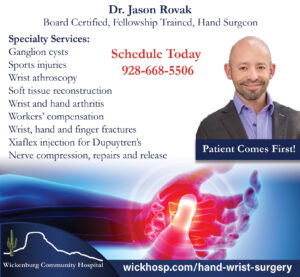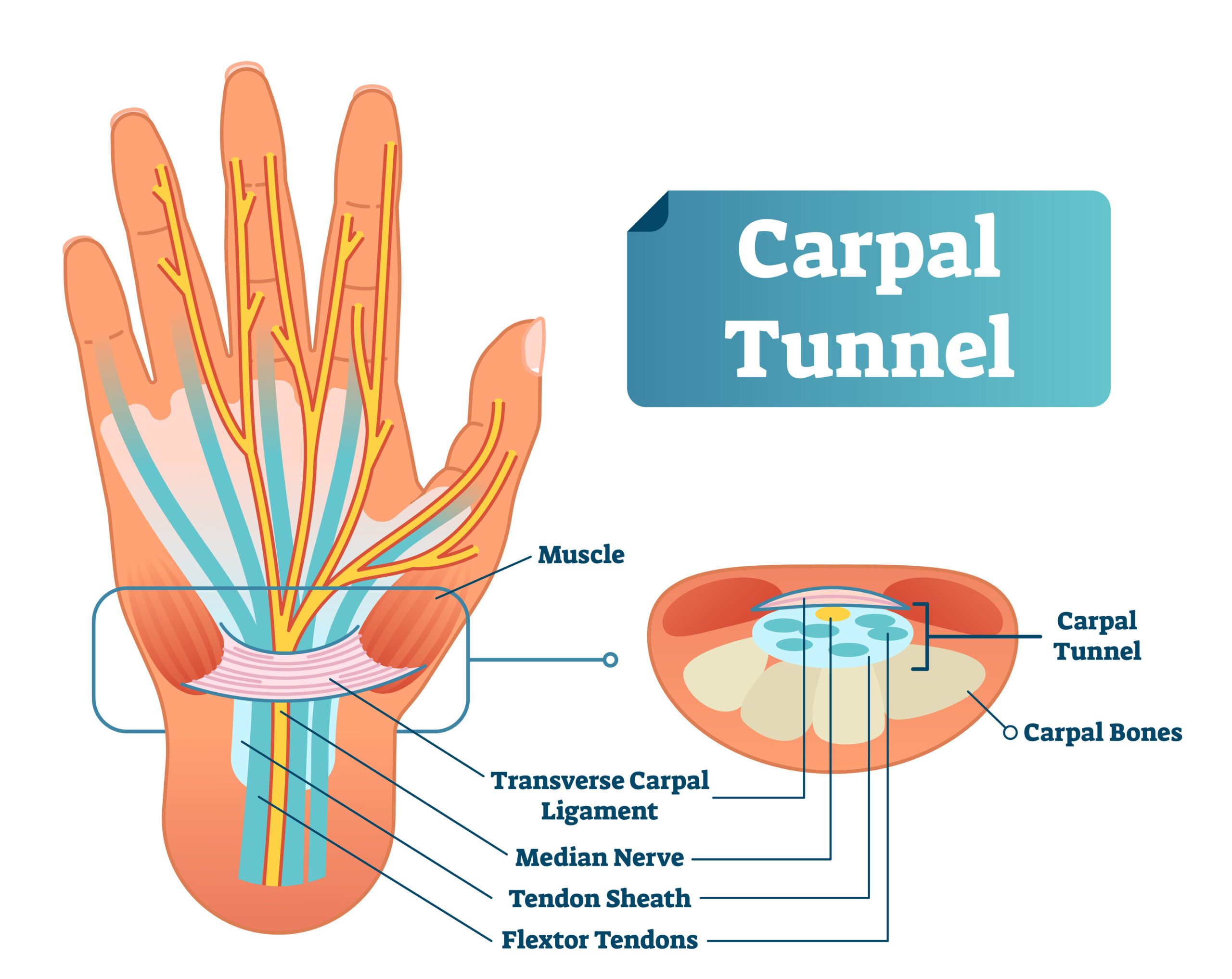Carpal Tunnel Syndrome :
:
Symptoms, when to come in, & common misconceptions
Jason Rovak, MD / Hand Surgeon
What are the symptoms?
Not all hand pain is carpal tunnel syndrome. Carpal tunnel syndrome has a very specific set of symptoms, such as numbness and tingling in the thumb, index, long finger, and sometimes the ring finger. Numbness in the small finger is generally not carpal tunnel but can be caused by compression of a different nerve. Symptoms usually start at night and many patients complain of waking up having to shake their hands out. As the problem progresses people will develop daytime symptoms. This commonly occurs when driving, talking on the phone, or working overhead. Finally, the symptoms can become constant.
When is it time to come in?
If you just have numbness at night, try wearing a wrist brace at night. This prevents you from sleeping with your wrists folded and takes the pressure off the nerve. While we can provide braces in the office, there are several appropriate options that can be found over the counter at the local pharmacy. If the symptoms become more frequent and are bothering you during the day, that’s when it’s time to come in. We don’t want you to wait until you have constant numbness to be treated. Nerve damage can become permanent if left untreated too long.
Treatment:
If the symptoms are keeping you from sleeping and interfering with your daytime activities it’s time to consider treatment. Steroid injections are an option, but I only recommend them in very specific circumstances. While they typically provide temporary results, in certain circumstances they are appropriate. If your symptoms are bad enough to require treatment, I will typically recommend a carpal tunnel release. While this is a surgical procedure, it can be performed with local numbing medicine only, like a dentist visit, and it only takes 10 minutes. The stitches are beneath the skin and dissolve, so you’ll never see them, and they do not need to be removed.
Recovery:
You can use your hands immediately after surgery. I have patients take their dressing off at home two days after the procedure. Most have near instant relief and are using their hands normally within a few days. People frequently tell me that the night of surgery is the best night of sleep they’ve had in months. I’ve even had patients go bowling before their first postoperative visit.
Misconceptions:
“I have a friend who had a carpal tunnel release and said it was horrible.” Most of those people had their procedure more than 20 years ago. These days most of my patients never take anything stronger than ibuprofen after the procedure, the symptoms improve almost immediately, and they are some of the happiest people I treat. While recovery can be different for everyone, there are several factors that can help predict how well you will do with the procedure. We have a good discussion ahead of time, so you know exactly what to expect in terms of relief and recovery.



